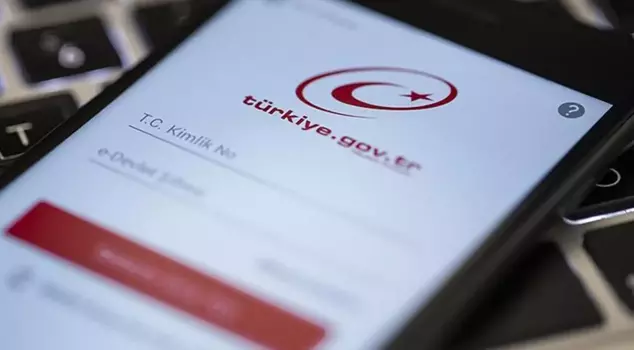
20.02.2025 12:11
The "2024-2030 National Geographic Information Strategy and Action Plan" prepared by the Ministry of Environment, Urbanization, and Climate Change has been published in the Official Gazette and has come into effect. Minister Kurum stated, "With our new regulation, critical geographic data needed especially in disasters and emergencies will be made available for sharing, thus accelerating the flow of information."
The "2024-2030 National Geographic Information Strategy and Action Plan" prepared by the General Directorate of Geographic Information Systems (CBS) under the Ministry has determined our country's goals and roadmap in the field of geographic information systems. The action plan published in the Official Gazette outlines 5 objectives, 26 targets, and 101 actions related to these targets.
Methods to ensure the production of accurate, standard, and high-quality geographic information at the national level and to facilitate the widespread sharing of this information were explained. In light of this action plan, a quality, up-to-date, and dynamic flow of geographic information will be provided to all sectors wishing to benefit from the geographic data infrastructure, contributing to the national economy. Public services will be provided in accordance with the developing technology of the geographic information system industry in our country in line with these determined goals.
"DATA SHARING WILL BE ACCELERATED IN DISASTERS AND EMERGENCIES"
According to the news on TRT Haber; Minister of Environment, Urbanization, and Climate Change Murat Kurum explained the details of the action plan in a post on his social media account: The "2024-2030 National Geographic Information Strategy and Action Plan" prepared by our General Directorate of Geographic Information Systems has been published in the Official Gazette and has come into effect. With our new regulation, critical geographic data needed in particular during disasters and emergencies will be made available for sharing, accelerating the flow of information. As the first step of our action plan, we have opened the National Geographic Information Platform for our citizens through the e-Government Gateway. Public institutions, local governments, and universities will be able to access all the data they need with a single click.
INTEGRATION WITH E-GOVERNMENT HAS BEEN ESTABLISHED
As the first step of the action plan, the National Geographic Information Platform has been opened for joint use through the e-Government Gateway. Thanks to the platform, citizens will have instant access to geographic information related to their region. The application will be accessible to public institutions, local governments, universities, and citizens. The reliability and rapid sharing of geographic data will enhance the effectiveness of public services.
PROVIDING SERVICE WITH 630 GEOGRAPHIC LAYERS
The platform, which currently has 14,000 users, aims to reach 66 million users with the e-Government integration. With 630 geographic layers (geographic definitions), the platform will offer a wide range of search options. Comprehensive services such as geographic data visualization, metadata management, and geographic data request and sharing portal will be provided on the platform. Additionally, there is a geographic data dictionary that helps users better understand geographic data standards. Citizens can access the application developed in cooperation with TÜRKSAT at the e-Government Gateway or at https://tucbs.gov.tr.
DIGITAL DATA SHARING IN DISASTERS AND EMERGENCIES
Another aim of the action plan is to ensure the effective use and sharing of geographic data related to disasters and emergencies through e-Government. In this context, critical data needed in emergencies can be detailed and sized by adding geographic layers.
CONTRIBUTING TO THE DEVELOPMENT OF THE GEOGRAPHIC INFORMATION INDUSTRY
Technology standards related to geographic information systems will be developed, innovative technologies and applications will be supported, and the process of transforming geographic data flows will be encouraged. Collaborations between public, universities, and the private sector will be supported. These collaborations will encompass research and development activities on advanced technologies such as AR/XR/VR and will prepare sample applications.
A SATELLITE IMAGE ARCHIVE WILL BE CREATED
Compliance processes of public institutions, local governments, and the private sector with the Turkey National Geographic Information System (TUCBS) standards will be developed. Guidelines for the use of artificial intelligence, machine learning, deep learning, and artificial neural networks in geographic information systems will be prepared, and application examples will be developed. Cooperation models will be developed within the scope of remote sensing and image processing technologies. An archive infrastructure for aerial photographs and satellite images will be created.
DATA AND SERVICE CAPACITY WILL BE DEVELOPED
The national geographic data infrastructure will be strengthened for access, sharing, and use of geographic data, and data quality will be improved. The national geographic data responsibility matrix will be detailed to include relevant institutions based on layers or attributes in the identification documents. The sharing matrix will be expanded to cover all geographic data producers. The accuracy, completeness, and timeliness of geographic data will be ensured, increasing data quality, and criteria for the usability of this data in official transactions will be established. In this context, awareness-raising activities will be organized at national and international levels, and integration with smart city policies will be provided.
CBS UNITS WILL BE ESTABLISHED
Again, within the scope of the action plan, CBS units will be established in public institutions and local governments, and institutions will carry out geographic information systems harmonization and integration processes through these units. Various training and dissemination activities will be carried out to increase the CBS knowledge level of public personnel.